Jerry Rutman 1/32 all-resin Ta-152C-1.
For Those Who Like Their History Straight...
The Ta‑152C was the airplane Kurt Tank was thinking of when he told the pilots of III/JG54 that the Fw‑190D‑9 they had just converted onto in September 1944 was "an interim type."
The Focke‑Wulf Fw‑190 had been plagued from the outset with lack of high altitude performance, a situation that led to the continued development of the Bf‑109 series past its development peak, due to the fact it had outstanding high altitude performance, which had became more and more necessary as the Eighth Air Force increased in size and effectiveness with its high altitude daylight assault on Germany.
The "Lang-Nasen" Dora‑9, powered by the Junkers Jumo 213A ‑ a bomber engine ‑ went some distance in solving the problem of high altitude performance, but the airplane still lost power above 25,000 feet, which was just the altitude the B‑17s and B‑24s came in at. Tank argued continually with the Reichluftfartministerium (RLM) to be allowed to put a Daimler‑ Benz DB603 series engine in the Jumo‑powered airframe, convinced that such a powerplant would provide the high altitude performance so needed. Tank's success with the high‑altitude Ta‑152H ‑ the first of the series that carried its designer's name in its designation ‑ which was powered by the Jumo 213E, demonstrated that he was on the right track.
Finally, in August 1944, following the failure of the Ta‑152B program, permission was granted to adapt the Ta‑152B airframe to the DB603 series engine. Tank made a maximum effort to bring the new type forward, utilizing as much of the B‑series airframe as possible. Plans were afoot to commence production deliveries from the Roland Group by April 1945.
Two Fw‑190D prototypes were modified with DB603L engines as the Fw‑190V20/U1 and Fw‑190V21/U1; unfortunately, the V20 was destroyed in an air raid on August 5, 1944. The V21 first flew on November 3, 1944, powered by a DB603E. In the meantime, three Ta‑152C development aircraft, the V6, V7 and V8, were under construction, with plans to power them with the DB603L.
The Ta‑152 V6, powered by a DB603LA engine, was otherwise similar to the Fw‑190V21, and made its first flight on December 17, 1944, flown by Hans Sander. The Ta‑152 V7 was similar, with the addition of the R‑11 all‑weather kit, thus representing what would be the Ta‑152C‑0/R11. This aircraft first flew January 27, 1945, again at the hands of Hans Sander. The Ta‑152 V8, with incorporated the new Revi EZ‑42 gyro gunsight, was the development prototype of the Ta‑152C‑1, and flew on January 14, 1945. All three had the heavy armament of a 30mm MK108 Motorkannon, two 20mm MG151s in the upper fuselage ahead of the cockpit, and two 20mm MG151s in the wing roots.
The V6 and V8 were powered by the DB603L, while the V7 was powered by the DB603EM, which offered 1,800 h.p. at takeoff, boosted to 2,250 h.p. with MW50, an improvement of 150 h.p. in both categories over the DB603L. The V7 was the fastest of the three prototypes with a sea level maximum speed of 342 mph and 370 mph without and with MW50, though at higher altitudes the DB603L provided substantially better performance. Unfortunately, both the DB603EM and the DB603L required 96 octane C3 fuel, which was becoming harder to obtain in 1945 Germany; as a result, it was decided that the production aircraft would be powered by the DB603LA, since this engine could use both 87 octane B4 or the higher‑octane C3.
The production versions would have been the Ta‑152C‑1 and Ta‑152C‑3, with the latter substituting a 30mm MK103 for the MK108, with all versions equipped with the R11 all‑weather set.
By the spring of 1945, however, Western and Soviet forces were sweeping into Germany, and there was no more time left for development. The factories where the Ta‑152C was to be produced were still at the component production stage when their assembly lines were overrun.
There can be little doubt that, had the war lasted into 1946, that the Ta‑152C would have proven a worthy opponent to the Spitfire 22/24 and the P‑51H, which were its closest Allied contemporaries.
And For Those Who Like Their History With a Water-back Chaser...
The rumble of engines woke Oberleutnant Classen before the orderly who was just entering the tent could accomplish his assignment. Swinging out of his sleeping bag, Classen pulled on flying coveralls and boots, and staggered outside to wash his face in cold water. The pre-dawn greyness to the east revealed another clear day, reminding him of that summer five years earlier when as a young Feldwebel he had flown against the RAF in the Battle of Britain.
Slinging his flight jacket over his shoulder, Classen headed to what passed for the mess tent and downed a cup of bitter ersatz "coffee", then headed for the flightline with his wingman, the faithful Feldwebel Willi Katz. The two had flown together now for over two years, and Classen knew this was why the Kommodore, Major Goetz, had brought them onto the Stab Schwarm and issued them the first two of the new "Caesar" Focke-Wulfs when they had been flown in from the Cottbus factory a week ago.
Classen arrived at his hardstand in the trees as his "black man" Heinz Klebber, climbed out of the cockpit. The Daimler 603 ticked over like a Swiss watch as the Oberleutnant made a quick walkaround of the Ta-152C before climbing onto the wing and into the cockpit of "Schwarz Vierzehn". The sun was high enough now that the greyness was now the first hint of the pink light of summer dawn as he saw Katz wave from his cockpit that he was ready.
The two dappled fighters rolled off their hard stands in the trees to the side of the open meadow that was their airfield. JG26 had been here ever since the Allies had successfully made their amphibious assault across the Rhine in June, and they had yet to have been spotted by the British Jabos who constantly swarmed overhead. Classen looked forward to this, his first dawn patrol in the new machine - would it live up to Kurt Tank's promise that the Caesar would be everything the Dora wasn't?
The field was clear as Classen pushed the throttle forward. The fighter seemed to leap across the grass, followed closely by Katz. Just as he hit takeoff speed, he saw the flashes on canopies ahead. Scheiss! Tommies! They'd been discovered!
The gear came up as soon as the wheels left the ground and the engine howled as Classen shoved it into "war emergency." He recognized the rapidly-approaching silhouettes ahead as the new radial-engine Tempests. Tracers shot past the canopy as the leader opened fire on the two lone Germans.
"Steady man, you're going to have to shoot your way out of here," Classen told himself as he took aim on the leading opponent. He touched the trigger, and four 20mm MG151s and a 30mm MK108 sent their fire toward the British fighter.
The explosion was spectacular as the Tempest's engine exploded! The big English fighter almost seemed to stop in flight from the impact of the big shells. Classen managed a half roll away to avoid the explosion. Just above the trees, he found himself dealing with the three members of the English flight, and he poured the coals to the Ta-152C and hoped it was true that he could outrun them.
He saw an explosion behind him in the rear-view mirror and glanced back in time to see Katz pull up from having exploded a second Tempest. The other two thought better of chasing him, realizing they were not playing with the usual novices, and the two German fighters were able to climb away from the field, which was now lit by the two burning Tempests.
"God, this thing can climb!" as he pulled through 9,000 meters, where the old Dora would give up the ghost. The DB603 out front kept pulling them upward until he leveled off at 10,000 meters.
The front to the south was lit by the flames of an Allied artillery barrage. The Americans and the Tommies might have had to fall back last winter, but that defeat had given them a second wind as they re-took the areas of northern France and Belgium they'd given up to the panzers in the snow. It was certain, with the Russians having crossed the Oder to the east, that this was the last summer of the war. But there was still enough time to revel in the act of flying the best fighter the Luftwaffe had come up with. The 262 might be fast, but it couldn't dogfight a Mustang...
Speaking of Mustangs, there they were, 2,000 feet below - a flight of the new Mustangs that had appeared for the first time the month previously. Classen looked over at Katz, and pointed down at the enemy below and ahead - Katz nodded, and the two 152s nosed over into the attack.
The four Americans in the red-nosed P-51Hs didn't know what hit them, as the two Germans dove on them, latching onto two that exploded almost instantly when they were hit by the barrage of heavy-caliber weapons. The leader and his wingman attempted to out-turn these Langnasen's as they had always been able to do before, but they were soon aware that they were up against something different, as the two Ta-152s continued closing. Classen remembered now what it had been like to fly the old Anton when they first appeared on the Channel Front three years ago - this new Caesar had that kind of performance advantage over the enemy! He lined up behind the wildly-jinking Mustang and pulled the trigger.
The Mustang, hit in the nose, seemed to come to a stop in the air. And then the canopy flew off and a figure flashed past as Classen overran his victim. As he chandelled upwards, he saw the American's parachute open.
"Zebra Two to One - red light," he heard Katz in his headphones. A quick look at the panel showed he too had ten minutes' fuel left.
The two Ta-152s arced down, flying low over the forest as they headed for home. Five in one mission - it hadn't been like this in a long, long time! Likely it wouldn't be for much longer.
As he touched down on the meadow, Classen passed the burned-out remains of three Doras. Obviously there had been more visitors while he'd been gone. But for this flight, this morning, for 45 minutes it had been like old times.
(thanks to my friend aviation artist George Patterson for illustrating my "dogfight")
There have been three kits made of the ultimate Langnasen that I am aware of. In the early 1990s, Tri-Master did a conversion of their Ta-152H kit, which wasn't that successful, was very pricey, and hasn't been available for other than outrageous eBay prices for years. The other was a very nice full-resin kit from R.V. Resins that was released in 2001, and that I reviewed here in Modeling Madness back when it was first released . Jerry Rutman's full-resin kit is the only release of this airplane in 1/32. Recently, Hobby Boss did a 1/48 injection-molded kit that is very nice.
Jerry Rutman has a reputation for being one of the best "garage kit" manufacturers. His full-resin kits and conversion sets have set a standard of excellence others have yet to match.
The kit masters for this are obviously based on the Hasegawa Fw-190D-9 kit. I don't say that disparagingly, since that is the best "Langnasen-Dora" kit in existence. Jerry has achieved a new standard of excellence in thin hollow-cast resin - if these parts were cast in light grey, once they were cleaned up you might think they were injection-molded plastic, they are that good. Surface detail is exactly the same as the Hasegawa kits.
All the parts have resin flash, and will require careful clean-up before assembly can begin. Once you have done so, the parts fit together well and assembly is very straightforward. Be sure to test-fit three times before gluing once.
There are no decals in the kit, but then there really was ever only one Ta-152C-0/V7 that existed. Fortunately, there are a plethora of aftermarket 1/32 Fw-190 decals available if you want to engage in "alternate history" as I did with this model, creating one of the pre-production Ta-152C-0s flown by the Geschwader Stab of JG26 during the air battles over western Germany in the summer of 1945, when the Allies had recovered from the success of the German Ardennes Offensive back in December 1944, and were finally able to invade Germany proper after re-taking Belgium and northern France that Spring.
Construction starts with a clean-up of all the parts. The casting process left quite a bit of flash that was trimmed away with a #11 Xacto. I then sanded all the mating surfaces clean on the major parts.
Following clean-up, I painted and detailed the cockpit and the engine plug. I then attached the exhausts, and glued the fuselage halves together. Once this had set up, I glued the cockpit into position, and the engine plug.
The wings went together easily for a resin kit, with the only problem being a need to test-fit and modify the wheel well walls for a clean fit.
Following assembly of the wing, I attached it to the fuselage. The engineering of the parts was so good that this was the best-fitting resin kit I have built. I only needed a little bit of Mr. Surfacer 500 on the fuselage centerline and the wing-fuselage attachment seams to clean everything up.
I then attached the horizontal stabilizers and the radiator cowling. I made the mistake at this point of attaching the radiator flaps. These are cut from Evergreen sheet and individually attached. In retrospect, I would attach these after painting the model, since I managed to knock some of them off more than once while handling the model during painting.
I finished the airframe assembly by attaching the windscreen, which is a resin frame using panels cut from clear butyrate. Again, the fit was excellent with only a bit of fiddling necessary during test-fitting to get it right. With this accomplished, the model was ready to paint.
Painting:
I first painted the wheel wells and the lower wing with SNJ Aluminum. When this was dry, I masked off the NMF area of the wing, and proceeded to pre-shade the model with flat black airbrushed along the panel lines.
I had decided to do a "what-if" model of an operational Ta-152C-1. I decided to do something that would be a variation of the field-applied camouflage of the famous "Yellow 10," since I think that provides a very interesting look. I also figured that it would be likely such a camouflage would be applied, since it was most likely that - had the Ta-152C been produced in 1945 - it would have featured a very simple factory-applied paint scheme, as had "Yellow 10."
First, I painted the black and white Reichverteidigung band of JG26, and masked that. I decided that for this model, the "factory scheme" would be RLM83 "Light" Green over RLM84 "Sky." I used Tamiya "Japanese Army Green" for the RLM84 color, since this is very close to that color (whatever it really was) on some Fw-190 parts Jerry Crandall had shown me a few years ago. I then applied Xtracrylix RLM83 for the upper surface color.
Decals - First Application:
After the "factory scheme" was dry and I had Futured it, I applied the "standard" markings - national insignia, stenciling, etc. These all came from various 1/32 Fw-190 decal sheets I had in the dungeon.
Painting Continues:
Once the "factory scheme" was on, I did a "field camouflage" that consisted of blotches of Xtracrylix RLM82 "Dark Green," followed by "scribbles" of Xtracrylix RLM81 "Brown-Violet" and RLM70 "Black-Green." This "field camo" was applied around the national insignia and over the stencils, as it would have been.
When the decals were done, I applied a coat of Xtracrylix Satin Varnish. When that was dry, I applied a coat or Xtracrylix Flat Varnish, which is really more a semi-matt finish. I finished off with two coats of thinned Dullcote.
Since the airplane didn't serve long enough to get weathered, I applied exhaust stains with Tamiya "Smoke" and left the rest in a clean condition.
Having built Jerry's Ta-152H kit and Fw-190D-13 conversion, as well as his conversion sets for the Trumpeter P-38, I can state categorically that this Ta-152C is the best of his kits I have seen. Built up and sitting next to my new Hasegawa 1/32 Fw-190s, someone could easily ask, "When did Hasegawa release that one?" It's that good. No major manufacturer is ever going to do the "ultimate Langnasen." For those of us who love Kurt Tank's fighter, this great kit is a worthy addition to the collection. The price of $95 is extremely reasonable for the quality of kit you get.
Jerry's kits are now available through Greymatter Figures.
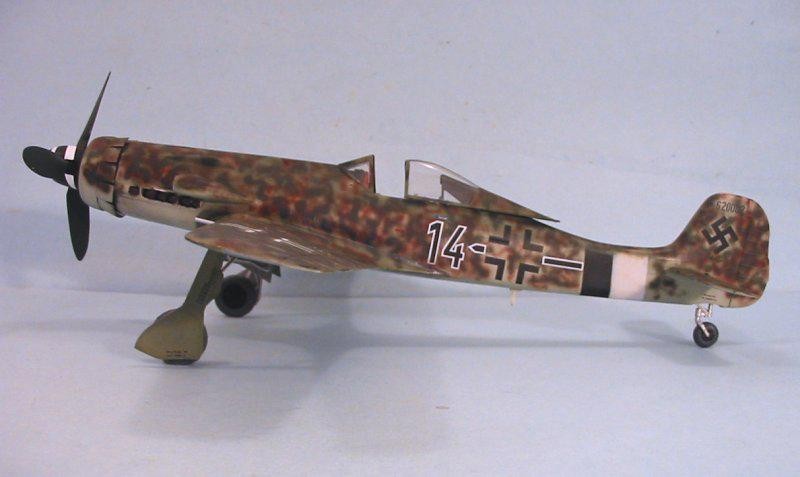
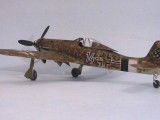
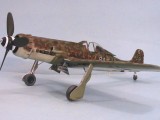
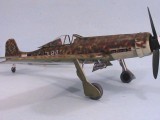
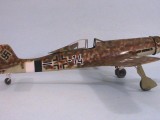
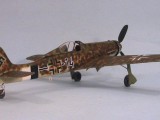
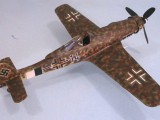
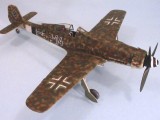
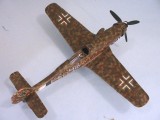
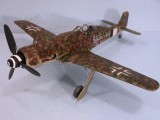
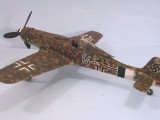
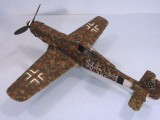
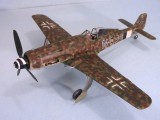
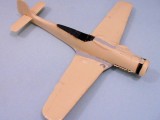
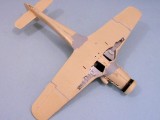
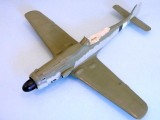
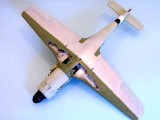
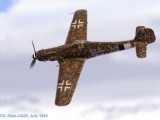
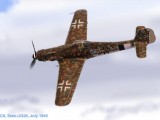
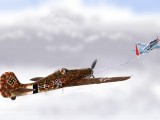

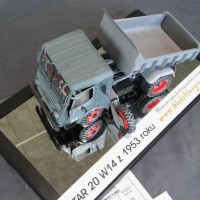
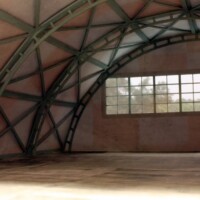
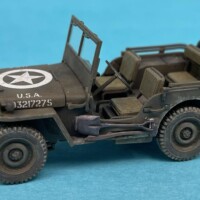
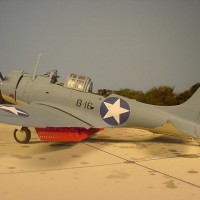
Beautiful Tom…..awesome paint work.
Wow Tom... very nice history of the a/c- seems to agree with and add to what I've managed to read on the subject. I like your approach on the paint scheme too... seems to make much sense without crossing the line into the often wildly speculative "Luft '46" realm.
The only thing that looks a bit odd to me is that, in your photos, theRLM 81 seems to be rendering as a rather orange-ey brown, kinda like a light version RAL 8017. Certainly could be the lighting, digital processing or other gremlins distorting color. (My first impression was that it looked a lot like an Italian came scheme).
All in all, a thoughtful approach and a great looking "Tank"! 😉 Kudos!
Tom, beautiful work! Looks lean and mean. Whose 1/48th kit of the C do you like? All the talk about the radiator being wrong on the available 48th C kits puts me off. Love the H, however.
I like the Hobby Boss kit. The only problem is the radiator, which 99% of people don't know or care about, and if you do there is a resin replacement,
That Fusion front fuselage?
Very nice - like the paint scheme. Not sure I can pull that off with a brush...!
Greg, I suspect that at the point of the war, the Germans did! Brushes, brooms, rags, bunches of straw- "field expedients" as we used to say in the Old Army. Not a whole lot of time for regulations or sublety.
Great work Tom! The literary approach is especially nice touch I enjoyed it a lot 🙂
Hello Tom
Again a nice study of a WW2 Fighter.
Love this one with its "like a 190D13" camo.
Thanks for sharing
Emmanuel
🙂 ... Greetings ... 🙂 :
Very striking paint job Tom.
Nice job.
🙂